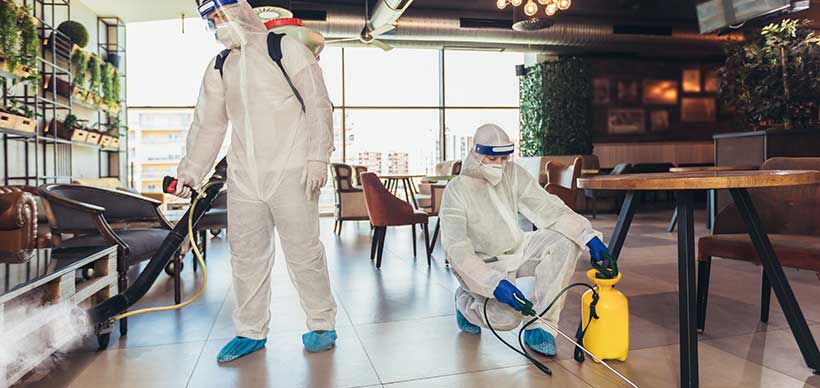What Are Hazmat Training Requirements?
What Are Hazmat Training Requirements?
April 11, 2023 |
Chemicals play a crucial role in various aspects of our lives, from purifying water and powering vehicles to constructing structures, fertilizing crops, producing medicines, manufacturing garments, and many more. Nonetheless, the transportation of chemicals and such hazardous materials inherently poses certain risks to people, the environment, and structures, thus requiring proper management. For this reason, it’s necessary for employees in the chemical industry who are involved in transporting hazardous materials (HazMat) to first undergo hazmat training and acquire a hazmat certification.
Under the federal Hazardous Materials Regulations (HMR), it is mandatory for all hazmat employers to provide hazmat training, testing, and certification to all hazmat employees before they undertake any task governed by the HMR. To maintain their hazmat certification, regular or refresher training is mandatory every three years at a minimum. There are five types of hazmat training that are compulsory to receive hazmat certification. Let’s go through the different hazmat training requirements below.
Why Is Hazmat Training Required?
The transportation of hazardous materials is a complex process that involves knowing how to handle, package, transfer, load, offload, and store dangerous substances. In addition, it is essential to be prepared for emergency situations that may arise when transporting such substances. To regulate this process, the Department of Transportation’s Pipeline and Hazardous Materials Safety Administration (PHMSA) has issued the Hazardous Materials Regulations (HMR).
These regulations establish the guidelines and requirements that must be followed when transporting hazmat by roads, railways, ships, and planes. In accordance with the Federal Hazardous Materials Transportation Law (49 U.S.C. 5101 et seq.), the HMR mandates that all hazmat employees, as well as employers who directly supervise hazmat transportation operations, must receive official hazmat training.
Through in-depth analyses, the HMR categorizes hazardous substances into different classes and packaging groups according to the level of risk they pose during transportation. Handling and packaging protocols are then specified for each hazardous substance category. The shipper must communicate the risks associated with each substance using proper freight documentation, shipping labels and tags, and placarding of cargo vehicles. In addition, the HMR mandates that shippers provide relevant emergency response information concerning the specific risks of the substance that’s being transported.
Types of Hazmat Training Requirements
- General Awareness Training
The purpose of this training is to equip employees with a comprehensive understanding of the Hazardous Materials Regulations (HMR), enabling them to identify and distinguish different hazardous substances. It covers essential topics such as the HMR training requirements, the hazardous substances table, as well as how to recognize and classify different hazardous substances. Training participants will also learn about proper packaging, segregating different materials, freight documentation, shipping labels and tags, placarding of cargo vehicles, security protocols, and incident reporting requirements.
- Safety Training
This training on safety will dive into the risks associated with the handling of hazardous substances, responding to emergency situations involving such materials, and preventing accidents. The training encompasses instructions on responding to emergencies under pressure, measures to shield workers from exposure risks to these dangerous substances, as well as different techniques and protocols to prevent accidents.
- Function-Specific Training
This job-specific training offers a comprehensive explanation of the specific roles and job-related requirements of HMR that must be followed by hazmat employees. The training will vary based on every employee’s duties and the company’s specific needs and expectations.
Some employees may require additional modal-specific training to be compliant with the HMR. This training provides further instructions specific to the mode of transport, whether by roads, railways, ships, or planes, that will be utilized. For instance, driver training would be necessary for those who will be transporting hazardous substances via freeways.
- Security Awareness Training
This training category deals with the security hazards associated with the transport of hazardous substances and elaborates on ways to detect and address potential security risks while also touching on measures to improve security.
Note that workers who handle hazardous substances, that necessitate their employer having a security plan in place, are required to undergo company-specific In-Depth Security Training (as mandated by 172.704(a)(5)). This training is entirely tailored to the company’s specific needs, therefore it must be developed and provided by the company itself.
- In-Depth Security Training
The last stage of the training program involves defining a firm’s security plans, which encompasses the establishment of security goals, protocols, employee accountabilities, measures to be taken in case of a security violation, and the company’s security framework.
The in-depth security plan training is only required for workers who are tasked with executing the business’ security plan, or those who perform or manage regulated roles associated with the transportation of hazardous substances detailed in the business’ security plans.
